Watch this video to learn about what causes tides! Click here to download this video (1920x1080, 103 MB, video/mp4).
High tides and low tides are caused by the moon. The moon's gravitational pull generates something called the tidal force. The tidal force causes Earth—and its water—to bulge out on the side closest to the moon and the side farthest from the moon. These bulges of water are high tides.

High tide (left) and low tide (right) in the Bay of Fundy in Canada. Image credit: Wikimedia Commons, Tttrung. Photo by Samuel Wantman.
As the Earth rotates, your region of Earth passes through both of these bulges each day. When you're in one of the bulges, you experience a high tide. When you're not in one of the bulges, you experience a low tide. This cycle of two high tides and two low tides occurs most days on most of the coastlines of the world.
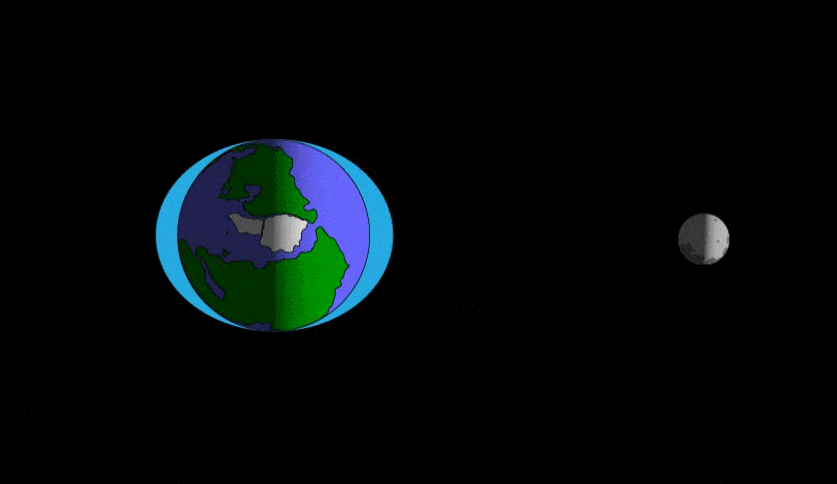
This animation shows the tidal force in a view of Earth from the North Pole. As regions of Earth pass through the bulges, they can experiences a high tide.
More About Tides
Tides are really all about gravity, and when we're talking about the daily tides, it's the moon's gravity that's causing them.
As Earth rotates, the moon's gravity pulls on different parts of our planet. Even though the moon only has about 1/100th the mass of Earth, since it's so close to us, it has enough gravity to move things around. The moon's gravity even pulls on the land, but not enough for anyone to tell (unless they use special, really precise instruments).
When the moon's gravity pulls on the water in the oceans, however, someone's bound to notice. Water has a much easier time moving around, and the water wants to bulge in the direction of the moon. This is called the tidal force.
Because of the tidal force, the water on the side of the moon always wants to bulge out toward the moon. This bulge is what we call a high tide. As your part of the Earth rotates into this bulge of water, you might experience a high tide.
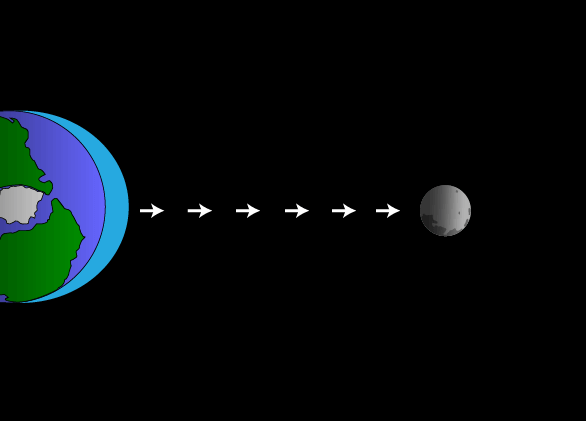
An illustration of the tidal force, viewed from Earth's North Pole. Water bulges toward the moon because of gravitational pull. Note: The moon is not actually this close to Earth.
One thing to note, however, is that this is just an explanation of the tidal force—not the actual tides. In real life, the Earth isn't a global ocean, covered in an even layer of water. There are seven continents, and that land gets in the way. The continents prevent the water from perfectly following the moon's pull. That's why in some places, the difference between high and low tide isn't very big, and in other places, the difference is drastic.
That explains the first high tide each day, but what about the second high tide?
The ocean also bulges out on the side of Earth opposite the moon.
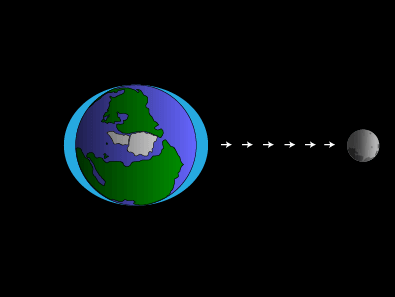
The tidal force causes water to bulge toward the moon and on the side opposite the moon. These bulges represent high tides.
Wait, what?
If the moon's gravity is pulling the oceans toward it, how can the ocean also bulge on the side of Earth away from the moon? It does seem a little weird. It's all because the tidal force is a differential force—meaning that it comes from differences in gravity over Earth's surface. Here's how it works:
On the side of Earth that is directly facing the moon, the moon's gravitational pull is the strongest. The water on that side is pulled strongly in the direction of the moon.
On the side of Earth farthest from the moon, the moon's gravitational pull is at its weakest. At the center of Earth is approximately the average of the moon's gravitational pull on the whole planet.
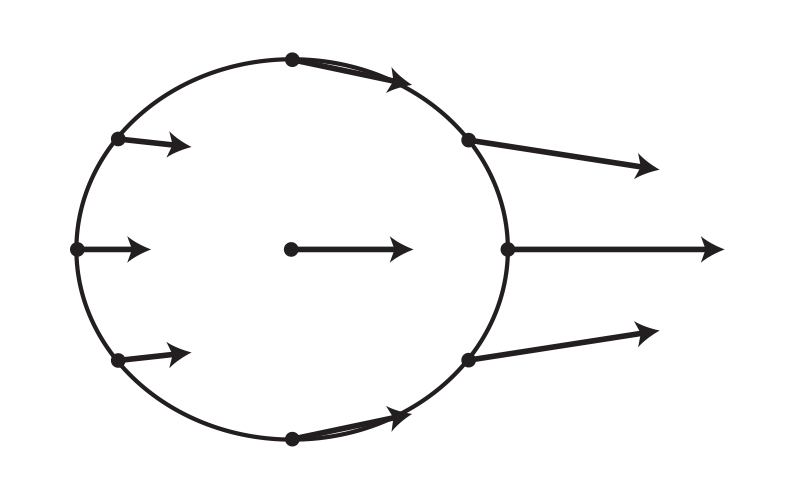
Arrows represent the force of the moon's gravitational pull on Earth. To get the tidal force—the force that causes the tides—we subtract this average gravitational pull on Earth from the gravitational pull at each location on Earth.
To get the tidal force—the force that causes the tides—we subtract this average gravitational pull on Earth from the gravitational pull at each location on Earth.
moon's gravitational pull in a specific location on Earth —
moon's average gravitational pull over the whole Earth
The result of the tidal force is a stretching and squashing of Earth. This is what causes the two tidal bulges.
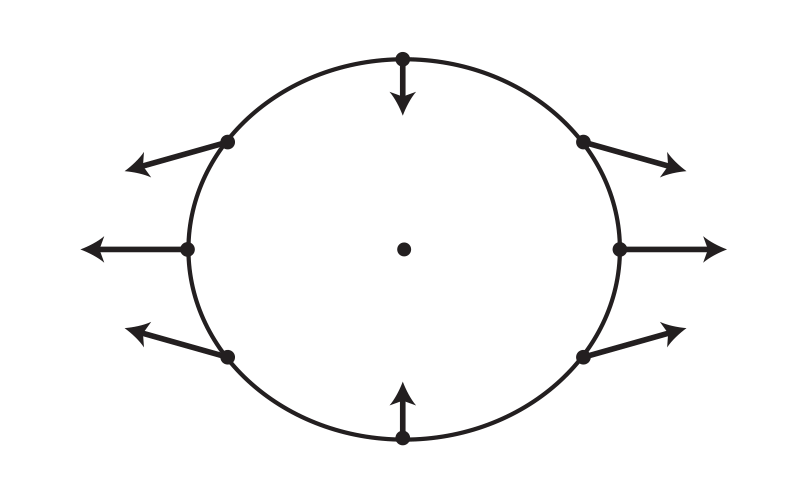
Arrows represent the tidal force. It's what's left over after removing the moon's average gravitational pull on the whole planet from the moon's specific gravitational pull at each location on Earth.
These two bulges explain why in one day there are two high tides and two low tides, as the Earth's surface rotates through each of the bulges once a day.
Does anything else affect tides?
The Sun causes tides just like the moon does, although they are somewhat smaller. When the earth, moon, and Sun line up—which happens at times of full moon or new moon—the lunar and solar tides reinforce each other, leading to more extreme tides, called spring tides. When lunar and solar tides act against each other, the result is unusually small tides, called neap tides. There is a new moon or a full moon about every two weeks, so that's how often we see large spring tides.
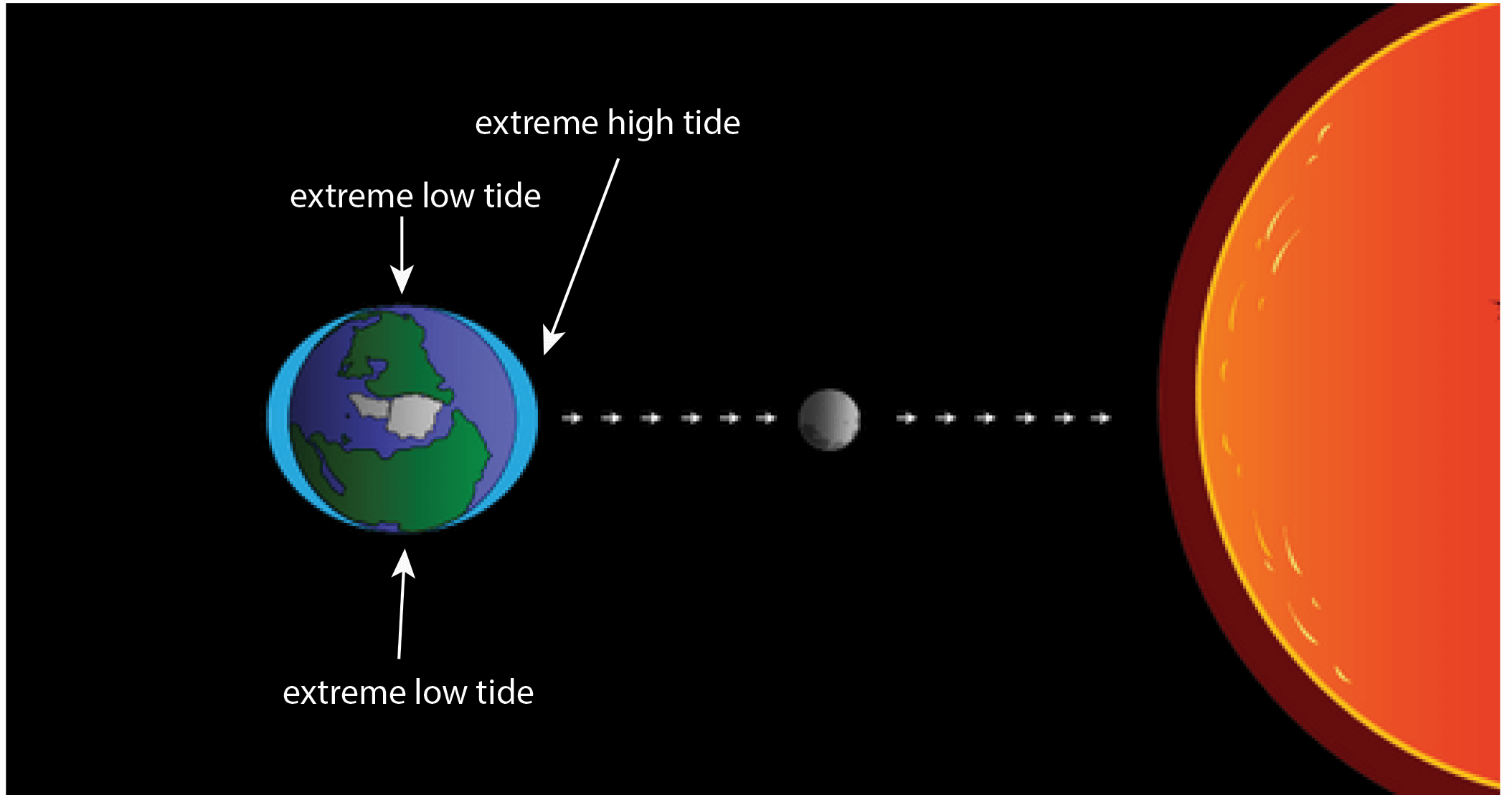
When the gravitational pull of the Sun and moon are combined, you get more extreme high and low tides. This explains high and low tides that happen about every two weeks. Note: this figure is not to scale. The Sun is much bigger and farther away.
Wind and weather patterns also can affect water level. Strong offshore winds can move water away from coastlines, exaggerating low tides. Onshore winds can push water onto the shore, making low tides much less noticeable.
High-pressure weather systems can push down sea levels, leading to lower tides. Low-pressure systems—brought on by strong storms and hurricanes—can cause tides than are much higher than predicted, so watch out!




